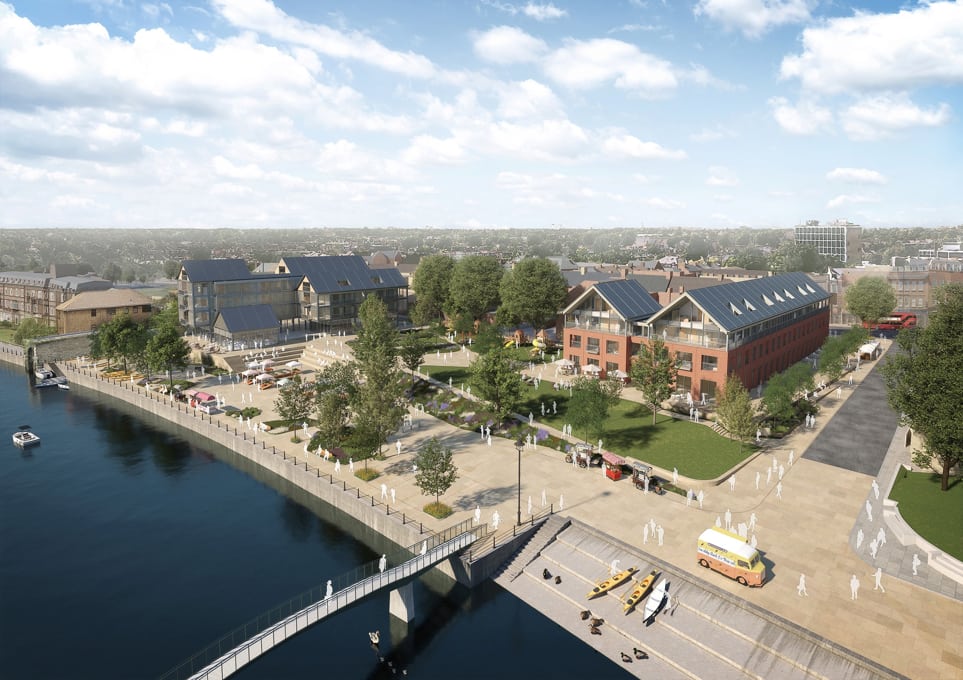Richmond Twickenham Riverside Planning Permission: The Complete Guide to Navigating Local Regulations and Securing Approval
Located along the scenic banks of the River Thames, Richmond Twickenham Riverside offers a picturesque blend of historical charm and modern convenience. Its enviable location, rich cultural heritage, and proximity to London make it a highly desirable place for both residential and commercial development. However, with its combination of heritage sites, conservation areas, and environmental considerations, obtaining planning permission in Richmond’s Twickenham Riverside can be a complex and intricate process.
Whether you are looking to extend your existing home, convert a building for a new purpose, or embark on an entirely new development project, understanding the planning regulations is crucial. This detailed, SEO-friendly guide will walk you through everything you need to know about planning permission in the area, from the types of developments that require permission to how to navigate the application process.
What is Planning Permission and Why Do You Need It in Richmond Twickenham Riverside?
Planning permission is the formal approval from the local planning authority (LPA) that allows you to carry out specific building works or changes to a property. It ensures that proposed developments are in line with local policies, aesthetic requirements, safety standards, and environmental regulations.
In the case of Richmond Twickenham Riverside, the local planning authority is the London Borough of Richmond upon Thames. The borough has stringent guidelines in place to maintain the area’s historical and architectural integrity. Whether you’re looking to expand your living space or develop a new property, planning permission helps regulate how these changes fit into the overall landscape of the community, ensuring they align with the local aesthetic and environmental needs.
Types of Developments that Require Planning Permission in Richmond Twickenham Riverside
Before proceeding with your development plans, it’s essential to know which types of projects require planning permission in the area. Some alterations and smaller works may fall under permitted development rights, meaning they can be carried out without formal approval. However, many developments will require you to submit a formal planning application.
Here are the most common types of developments in Richmond Twickenham Riverside that typically require planning permission:
1. Home Extensions
Homeowners looking to extend their properties, whether through a rear extension, a side extension, or adding a second storey, will generally need to apply for planning permission. This ensures that the expansion fits with the local architectural style and does not negatively impact the surrounding properties or green spaces. Special consideration is often given to the impact on nearby residents, privacy concerns, and the overall design.
2. Loft Conversions
While some loft conversions may be carried out under permitted development rights, larger projects or those in conservation areas often require planning permission. In Richmond Twickenham Riverside, many properties are in conservation areas or listed, making it essential to follow the necessary steps to preserve the area’s historical features.
3. New Builds
If you are planning to demolish an existing building and replace it with a new structure, full planning permission is a must. New builds are subject to detailed scrutiny regarding the impact on the local environment, infrastructure, and visual appearance. Given the location along the river and the area’s historic status, there will be additional considerations in terms of flood risk management, environmental impact, and heritage preservation.
4. Change of Use
Changing the use of a property – such as converting a residential building into a commercial space or vice versa – requires planning permission. Given Richmond’s diverse mix of residential, commercial, and leisure spaces, it’s crucial to ensure that any change in use adheres to local zoning laws and community guidelines.
5. Commercial Developments
For commercial projects like retail spaces, office buildings, or restaurants, planning permission is also necessary. The nature of the business, its potential impact on local traffic, and its compatibility with surrounding properties will all be considered in the application process.
Key Considerations When Applying for Planning Permission in Richmond Twickenham Riverside
While navigating the planning permission process can seem complex, there are several key factors to keep in mind to ensure your project aligns with the local authority’s expectations. Here are some considerations to be aware of when applying for planning permission in Richmond Twickenham Riverside:
1. Conservation Areas and Listed Buildings
Much of Richmond Twickenham Riverside is designated as a conservation area or features listed buildings. This means that any alterations, demolitions, or new developments must be carefully considered to preserve the historical and architectural value of the area.
If your property is located in a conservation area or is a listed building, your planning application will need to include detailed proposals on how the development will maintain or enhance the property’s character. In some cases, you may need to provide a heritage impact statement to justify the proposed changes.
2. Flood Risk and Environmental Considerations
The proximity to the River Thames means that many properties in the area are at risk of flooding. Planning permission applications in Richmond Twickenham Riverside must consider flood risk and include measures to protect against potential water damage.
The planning authority may require a flood risk assessment (FRA) to evaluate how your proposed development will manage stormwater runoff and mitigate the risk of flooding. You may also be asked to incorporate sustainable drainage systems (SuDS) into your plans.
3. Architectural Style and Visual Impact
Richmond Twickenham Riverside is known for its blend of traditional and contemporary architecture. Planning authorities will assess whether your development fits within the aesthetic context of the area. This is particularly important when considering new builds, extensions, or alterations to existing structures.
Design proposals must demonstrate that the new development will complement the surrounding buildings and preserve sightlines, especially in prominent or riverside locations.
4. Traffic, Transport, and Infrastructure
Any development or change of use in the area will be scrutinized for its impact on local infrastructure, particularly transportation. Richmond Twickenham Riverside is well-connected by public transport, but additional demand on local roads, parking spaces, or public transit must be addressed in your planning application.
For larger developments, a transport statement or transport assessment may be required to analyze potential traffic impacts.
The Planning Permission Process in Richmond Twickenham Riverside
The planning permission process in Richmond Twickenham Riverside follows a structured procedure, which typically involves several key stages:
1. Pre-Application Advice
Before submitting your formal planning application, it is advisable to seek pre-application advice from the London Borough of Richmond upon Thames. This advice can provide insight into the likelihood of approval, highlight potential issues, and offer suggestions on how to improve your proposal. Pre-application discussions are especially valuable for complex or large-scale projects.
2. Submit Your Planning Application
Once you have gathered all the necessary documentation, including site plans, design proposals, and any required assessments, you can submit your planning application through the London Borough of Richmond upon Thames online portal.
3. Consultation Period
After submission, there will be a consultation period where the planning authority will seek feedback from the public, neighboring properties, and relevant stakeholders. This is your chance to address any concerns raised and provide additional information as needed.
4. Planning Decision
The planning authority will review all feedback and make a decision regarding your application. If your application is approved, you can proceed with your project. If denied, you may be able to appeal the decision or revise your plans and reapply.
Conclusion: Ensuring Success in Securing Planning Permission in Richmond Twickenham Riverside
Securing planning permission in Richmond Twickenham Riverside can seem like a complex process, but by understanding local regulations, environmental factors, and the unique historical context of the area, you can ensure that your project meets all the necessary criteria. Whether you’re looking to expand your home, develop a new building, or change the use of a property, following the correct procedures will help you achieve your goals while preserving the charm and character of this exceptional riverside location.
Consulting with local architects, planners, or experts familiar with the Richmond planning process is always a good idea to ensure your application is thorough and well-prepared. With the right approach, your development project can contribute positively to the area’s ongoing growth and preservation.



No responses yet